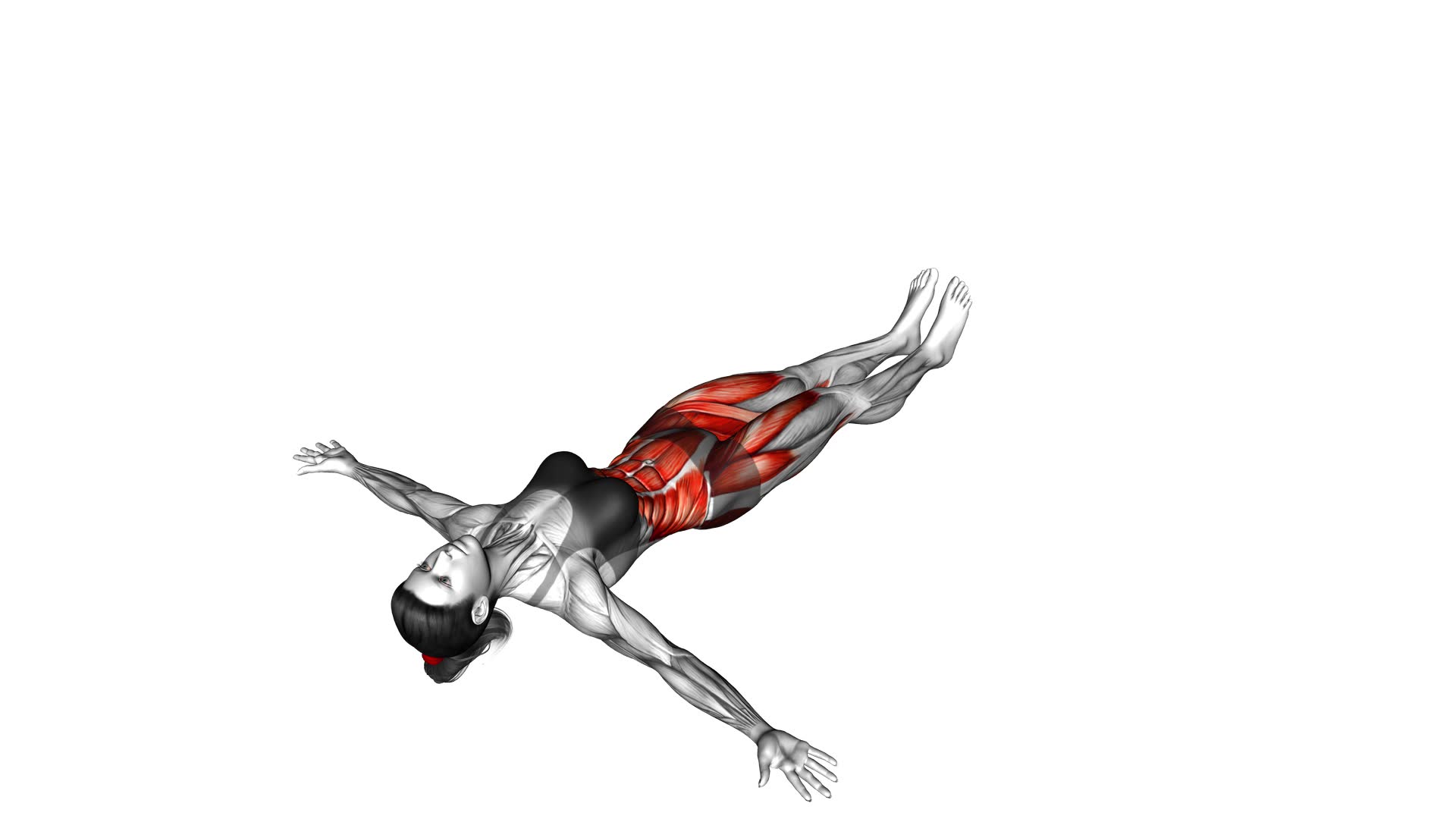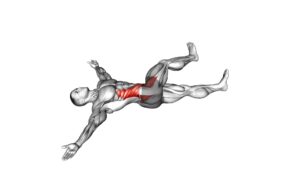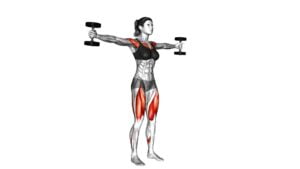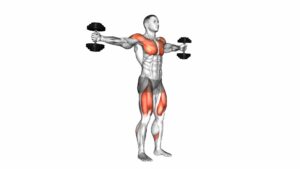Iron Cross Stretch (female) – Video Exercise Guide & Tips

Are you looking for a challenging stretch that targets your entire body? Look no further than the Iron Cross Stretch!
Watch This Exercise Video
In this video exercise guide, we'll show you the proper form and technique to get the most out of this exercise. Whether you're a beginner or advanced, we've got modifications and variations to suit your level.
Avoid common mistakes and maximize your results with our expert tips.
Get ready to feel the burn and improve your flexibility with the Iron Cross Stretch!
Key Takeaways
- Iron Cross Stretch targets multiple muscle groups simultaneously
- Proper form and technique are crucial for maximizing benefits and avoiding injuries
- Avoid common mistakes such as rounding the shoulders, neglecting proper breathing, and incorrect arm positioning
- Consistency and routine are important for achieving the best results from the Iron Cross Stretch
Benefits of the Iron Cross Stretch
To experience the benefits of the Iron Cross Stretch, you should aim for a deep and controlled stretch that targets multiple muscle groups simultaneously. This stretch is highly effective in improving flexibility and posture.
One of the main benefits of flexibility is increased range of motion in your joints. By regularly performing the Iron Cross Stretch, you can gradually increase your flexibility, allowing you to move more freely and reduce the risk of injury.
Additionally, this stretch helps to lengthen and strengthen various muscle groups, including the hamstrings, glutes, lower back, and shoulders. By targeting these areas, it can help improve your overall posture.
Good posture is essential for maintaining proper alignment of the spine and reducing strain on your muscles and joints. It can also enhance your appearance and boost your confidence.
Incorporating the Iron Cross Stretch into your routine can therefore have a positive impact on both your physical well-being and your overall posture.
Proper Form and Technique
To perform the Iron Cross Stretch with proper form and technique, it's important to focus on alignment. Keep your legs straight and your toes pointed, while maintaining a straight line from your head to your toes.
Avoid common mistakes such as rounding your back or hunching your shoulders. By maintaining proper technique, you can maximize the benefits of this stretch and avoid potential injuries.
Importance of Alignment
Maintaining proper alignment is essential for maximizing the benefits and effectiveness of the Iron Cross Stretch. Alignment in yoga and proper posture in exercise are crucial for ensuring that you're targeting the right muscles and minimizing the risk of injury.
When performing the Iron Cross Stretch, it's important to align your body in a way that allows for a deep and safe stretch. Keep your spine straight, shoulders relaxed, and engage your core muscles to support your back. Avoid arching or rounding your back, as this can strain your spine and limit the stretch.
By maintaining proper alignment, you'll be able to fully engage the targeted muscles and achieve optimal results.
Now, let's delve into the next section and explore some common mistakes to avoid during the Iron Cross Stretch.
Avoiding Common Mistakes
To avoid common mistakes and ensure proper form and technique, you should focus on maintaining alignment and engaging the correct muscles during the Iron Cross Stretch. This exercise can be challenging, but with the right approach, you can maximize its benefits and minimize the risk of injury.
Here are some common misconceptions and pitfalls to avoid:
- Avoid letting your shoulders round forward. Keep them pulled back and down to maintain proper alignment.
- Don't rely solely on your arms to support your body weight. Engage your core muscles to help stabilize your body.
- Avoid sinking into your lower back. Keep your pelvis neutral and engage your glutes to support your lower body.
- Don't push yourself too hard. Take it slow and listen to your body to avoid overstretching or straining.
- Avoid holding your breath. Remember to breathe deeply and stay relaxed throughout the stretch.
Benefits of Proper Technique
Maximizing the benefits of the Iron Cross Stretch involves focusing on proper alignment, engaging the correct muscles, and avoiding common mistakes. By maintaining proper form and technique, you can reap the benefits of flexibility and improve your range of motion.
When you perform the Iron Cross Stretch with precision, you target multiple muscle groups simultaneously, including the chest, shoulders, and upper back. This stretch helps to release tension, increase flexibility, and enhance your overall mobility. It also improves your posture and reduces the risk of muscle imbalances and injuries.
By practicing the Iron Cross Stretch with proper technique, you can maximize its benefits and achieve greater flexibility and range of motion.
Now, let's explore modifications for beginners to gradually build up their strength and flexibility.
Modifications for Beginners
Start with a gentle variation of the Iron Cross Stretch that's suitable for beginners. This modified version will help you ease into the stretch and gradually build flexibility and strength. Here are some modifications for beginners to consider:
- Use a towel or strap: If you find it difficult to reach your hands behind your back, use a towel or strap to bridge the gap. This will allow you to hold onto the towel or strap with both hands and gradually work towards touching your hands together.
- Bend your knees: To relieve strain on your lower back and hamstrings, start by bending your knees slightly. As you become more comfortable with the stretch, you can gradually straighten your legs.
- Reduce the range of motion: Instead of aiming to touch your hands together behind your back, start by reaching towards your lower back or hips. As you progress, you can increase the range of motion and aim for the full Iron Cross position.
- Engage your core: To support your lower back and maintain stability, engage your core muscles throughout the stretch. This will help prevent any excessive arching or strain on your spine.
- Listen to your body: Pay attention to how your body feels during the stretch. If you experience any pain or discomfort, ease off and modify the stretch further until you find a comfortable range of motion.
Advanced Variations and Challenges
Now that you've mastered the basic iron cross stretch, it's time to take your flexibility to the next level with advanced variations and challenges.
These techniques are designed to push your limits and further increase your strength, balance, and flexibility.
Extreme Flexibility Techniques
To improve your flexibility even further, incorporate advanced variations and challenges into your routine on a regular basis. Pushing yourself beyond your limits won't only enhance your splits training and contortion exercises, but also give you a sense of accomplishment and satisfaction.
Here are five extreme flexibility techniques to take your flexibility to the next level:
- Over splits: By placing one leg on a raised surface and extending the other leg into a split position, you'll deepen your stretch and improve your flexibility.
- Backbends on elevated surfaces: Performing backbends on raised platforms or using props like yoga wheels can help you increase your back flexibility and achieve deeper bends.
- Front splits with backbend: Combining front splits with a backbend allows you to work on both your leg and back flexibility simultaneously.
- Standing splits: Balancing on one leg while extending the other leg into a split position challenges your stability and flexibility.
- Contortion-style stretches: Incorporating contortion-inspired stretches, such as chest stands and needle stretches, can help you achieve extreme flexibility and advanced poses.
Increase Strength and Balance
To enhance your strength and balance, incorporate advanced variations and challenges into your routine on a regular basis. These exercises won't only push your limits but also help you improve your overall performance.
Flexibility exercises, such as deep squats and lunges with twists, can help increase your range of motion and improve your stability.
Additionally, incorporating core stability exercises like planks and Russian twists can enhance your balance and strengthen your core muscles.
It's important to gradually increase the difficulty of these exercises to prevent injury and ensure steady progress.
Common Mistakes to Avoid
Be careful not to rush through the Iron Cross Stretch, as this can lead to common mistakes that may hinder your progress. Proper technique is essential for maximizing the benefits of this exercise.
Here are some common mistakes to avoid:
- Not warming up: Skipping a proper warm-up can increase the risk of injury and decrease the effectiveness of the stretch. Take a few minutes to warm up your muscles before attempting the Iron Cross Stretch.
- Lack of flexibility: Trying to force your body into the full stretch without having the necessary flexibility can strain your muscles and joints. Start with modified versions of the stretch and gradually increase the range of motion as your flexibility improves.
- Incorrect arm positioning: Placing your arms too far apart or too close together can affect the effectiveness of the stretch. Ensure that your arms are positioned correctly by aligning your hands with your shoulders.
- Leaning forward: Leaning forward during the stretch can compromise the alignment of your spine and put unnecessary strain on your lower back. Keep your torso upright and engage your core to maintain proper form.
- Neglecting proper breathing: Breathing plays a crucial role in any exercise. Forgetting to breathe or holding your breath can increase tension in your muscles and limit the benefits of the stretch. Remember to breathe deeply and exhale as you deepen the stretch.
Tips for Maximizing Results
To maximize your results, incorporate these key tips into your Iron Cross Stretch routine.
Maximizing flexibility is crucial for achieving the full benefits of this stretch. One important tip is to warm up your muscles before starting the exercise. This will increase blood flow and prepare your muscles for a deeper stretch.
Additionally, focusing on your breathing during the stretch can help you relax and go further into the stretch. Take slow, deep breaths and exhale as you deepen the stretch.
Another tip is to hold the stretch for at least 30 seconds. This allows the muscles to fully lengthen and improves flexibility over time.
Experiment with different stretching techniques to find what works best for you. For example, you can try dynamic stretching before the Iron Cross Stretch to activate your muscles, or static stretching after the exercise to further increase flexibility.
Remember to listen to your body and never push yourself beyond your limits.
Consistency is key, so try to incorporate the Iron Cross Stretch into your regular workout routine for best results.
Frequently Asked Questions
Can the Iron Cross Stretch Help Improve Flexibility in Other Areas of the Body?
The Iron Cross Stretch can indeed help improve flexibility in other areas of your body. By engaging multiple muscle groups and stretching the chest, shoulders, and upper back, this exercise promotes overall flexibility.
Additionally, the Iron Cross Stretch can enhance your range of motion and improve posture. Incorporating other stretches into your routine can further enhance the benefits of flexibility, allowing you to move more freely and prevent injuries.
Is It Safe to Perform the Iron Cross Stretch if I Have a History of Shoulder or Back Injuries?
It's important to consider some precautions before performing the Iron Cross Stretch if you have a history of shoulder or back injuries. While this stretch can be beneficial for improving flexibility, it may put strain on these areas.
It's recommended to consult with a healthcare professional or a qualified trainer who can provide modifications or alternative stretches that are safer for your specific condition.
Prioritizing safety and avoiding further injury is crucial.
How Often Should I Include the Iron Cross Stretch in My Exercise Routine for Optimal Results?
To achieve optimal results, it's important to include the iron cross stretch regularly in your exercise routine.
Regular stretching offers numerous benefits, such as improved flexibility, increased range of motion, and reduced muscle tightness.
To progress in the iron cross stretch, start with a comfortable range of motion and gradually increase the stretch over time.
Remember to listen to your body and avoid pushing yourself too hard, especially if you have a history of shoulder or back injuries.
Can the Iron Cross Stretch Be Beneficial for Athletes in Specific Sports?
The iron cross stretch can be highly beneficial for athletes in specific sports. It offers numerous benefits for gymnasts, such as increased flexibility, improved shoulder and chest strength, and enhanced body control.
Additionally, variations of the iron cross stretch can be tailored to suit different sports. For example, basketball players can focus on improving their upper body strength and flexibility, while swimmers can modify the stretch to target their shoulder mobility.
Are There Any Specific Warm-Up Exercises Recommended Before Attempting the Iron Cross Stretch?
Before attempting the Iron Cross Stretch, it's crucial to do specific warm-up exercises to prepare your body. These exercises will help increase flexibility and prevent injury.
Incorporating dynamic stretches and mobility drills into your warm-up routine can be beneficial. They'll enhance your range of motion and loosen up the muscles needed for the Iron Cross Stretch.
Conclusion
In conclusion, the Iron Cross Stretch is a beneficial exercise for improving flexibility and mobility in the shoulders and upper body.
By following proper form and technique, beginners can gradually work their way up to advanced variations and challenges.
It's important to avoid common mistakes and maximize results by staying consistent and listening to your body.
Incorporating this stretch into your fitness routine can help enhance overall performance and prevent injuries.

Author
Years ago, the spark of my life’s passion ignited in my mind the moment I stepped into the local gym for the first time. The inaugural bead of perspiration, the initial endeavor, the very first surge of endorphins, and a sense of pride that washed over me post-workout marked the beginning of my deep-seated interest in strength sports, fitness, and sports nutrition. This very curiosity blossomed rapidly into a profound fascination, propelling me to earn a Master’s degree in Physical Education from the Academy of Physical Education in Krakow, followed by a Sports Manager diploma from the Jagiellonian University. My journey of growth led me to gain more specialized qualifications, such as being a certified personal trainer with a focus on sports dietetics, a lifeguard, and an instructor for wellness and corrective gymnastics. Theoretical knowledge paired seamlessly with practical experience, reinforcing my belief that the transformation of individuals under my guidance was also a reflection of my personal growth. This belief holds true even today. Each day, I strive to push the boundaries and explore new realms. These realms gently elevate me to greater heights. The unique combination of passion for my field and the continuous quest for growth fuels my drive to break new ground.



